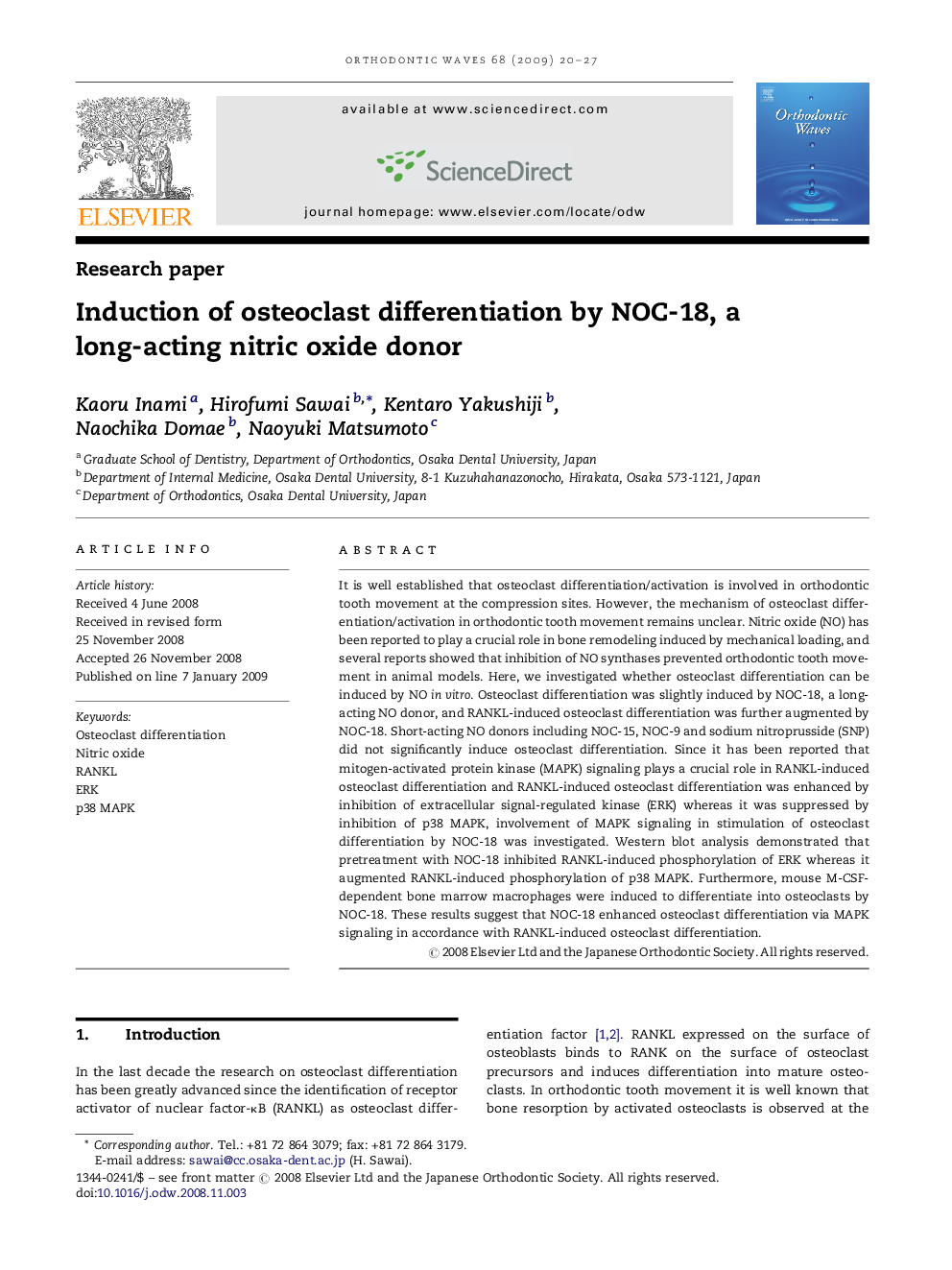| Article ID | Journal | Published Year | Pages | File Type |
|---|---|---|---|---|
| 3170569 | Orthodontic Waves | 2009 | 8 Pages |
It is well established that osteoclast differentiation/activation is involved in orthodontic tooth movement at the compression sites. However, the mechanism of osteoclast differentiation/activation in orthodontic tooth movement remains unclear. Nitric oxide (NO) has been reported to play a crucial role in bone remodeling induced by mechanical loading, and several reports showed that inhibition of NO synthases prevented orthodontic tooth movement in animal models. Here, we investigated whether osteoclast differentiation can be induced by NO in vitro. Osteoclast differentiation was slightly induced by NOC-18, a long-acting NO donor, and RANKL-induced osteoclast differentiation was further augmented by NOC-18. Short-acting NO donors including NOC-15, NOC-9 and sodium nitroprusside (SNP) did not significantly induce osteoclast differentiation. Since it has been reported that mitogen-activated protein kinase (MAPK) signaling plays a crucial role in RANKL-induced osteoclast differentiation and RANKL-induced osteoclast differentiation was enhanced by inhibition of extracellular signal-regulated kinase (ERK) whereas it was suppressed by inhibition of p38 MAPK, involvement of MAPK signaling in stimulation of osteoclast differentiation by NOC-18 was investigated. Western blot analysis demonstrated that pretreatment with NOC-18 inhibited RANKL-induced phosphorylation of ERK whereas it augmented RANKL-induced phosphorylation of p38 MAPK. Furthermore, mouse M-CSF-dependent bone marrow macrophages were induced to differentiate into osteoclasts by NOC-18. These results suggest that NOC-18 enhanced osteoclast differentiation via MAPK signaling in accordance with RANKL-induced osteoclast differentiation.
